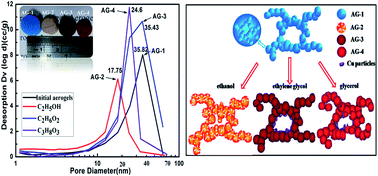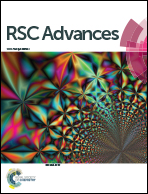Template confined synthesis of Cu- or Cu2O-doped SiO2 aerogels from Cu(ii)-containing composites by in situ alcohothermal reduction†
Abstract
Uniform and highly dispersed Cu- or Cu2O-doped SiO2 aerogels were synthesized via an in situ alcohothermal reduction strategy. The initial templates containing an accurately controllable doping fraction were prepared through a co-gelation method. After alcohothermal reduction and CO2 supercritical drying, a similar morphology of the resulting samples to the initial templates was retained. The entire reducing process was systematically studied through comparative experiments, separately using ethanol, ethylene glycol and glycerol as reducing agents, with the corresponding converted products obtained being cubic Cu2O- and Cu-contained silica composites. The specific surface area of the resulting products ranged from 500 m2 g−1 to 850 m2 g−1. The related microstructure evolution mechanism was comprehensively studied through analysis of the pore-size distribution. The high specific surface area and controlled doping amount make it suitable for possible use in specific applications, such as high efficiency photocatalysis and backlight targets.


 Please wait while we load your content...
Please wait while we load your content...